
- Home
- News
- Analysis
- States
- Perspective
- Videos
- Education
- Entertainment
- Elections
- World Cup 2023
- Features
- Health
- Business
- Series
- Economy Series
- Earth Day
- Kashmir’s Frozen Turbulence
- India@75
- The legend of Ramjanmabhoomi
- Liberalisation@30
- How to tame a dragon
- Celebrating biodiversity
- Farm Matters
- 50 days of solitude
- Bringing Migrants Home
- Budget 2020
- Jharkhand Votes
- The Federal Investigates
- The Federal Impact
- Vanishing Sand
- Gandhi @ 150
- Andhra Today
- Field report
- Operation Gulmarg
- Pandemic @1 Mn in India
- The Federal Year-End
- The Zero Year
- Premium
- Science
- Brand studio
- Home
- NewsNews
- Analysis
- StatesStates
- PerspectivePerspective
- VideosVideos
- Entertainment
- ElectionsElections
- Sports
- Loading...
Sports - Features
- BusinessBusiness
- Premium
- Loading...
Premium
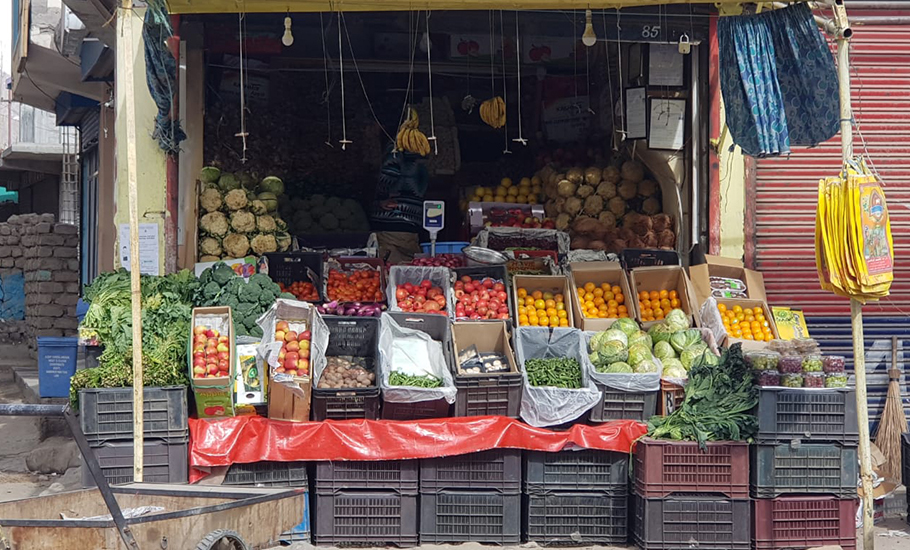
How vegetables reunited Ladakh with Kashmir this winter

The heat generated by the ongoing faceoff, intermittent skirmishes between the Indian Army and the People’s Liberation Army of China along the Line of Actual Control in Ladakh, and massive troop build-up melted the territorial border this winter between Jammu & Kashmir and Ladakh. Over two years after the central government bifurcated the state of Jammu and Kashmir into the...
The heat generated by the ongoing faceoff, intermittent skirmishes between the Indian Army and the People’s Liberation Army of China along the Line of Actual Control in Ladakh, and massive troop build-up melted the territorial border this winter between Jammu & Kashmir and Ladakh.
Over two years after the central government bifurcated the state of Jammu and Kashmir into the Union Territories of J&K and Ladakh, vegetables reunited the two.
Even though Ladakh faces a shortage of vegetables every year as the region remains cut off for at least four to five months during winter due to snowfall and barely grows any on its own due to harsh weather conditions, the demand for veggies increased manifold this year as supplies took a further hit from the border tension.
What helped, however, was the Centre’s decision to ensure that the snowbound Zojila Road remains functional even in winter months–in the wake of the tension along the border in eastern Ladakh. The road which the Indian Army used to replenish its supplies also helped Kashmiri traders take vegetables to people Ladakh.
“The availability of fresh vegetables is in abundance as many suppliers from Kashmir have flooded the Leh market this winter,” Phuntsok Wangchuk, a local hotelier, said. “We had never seen these Kashmiri vendors around here this time of the year. Had they not come, there would have been a dearth of vegetables like every other winter.”
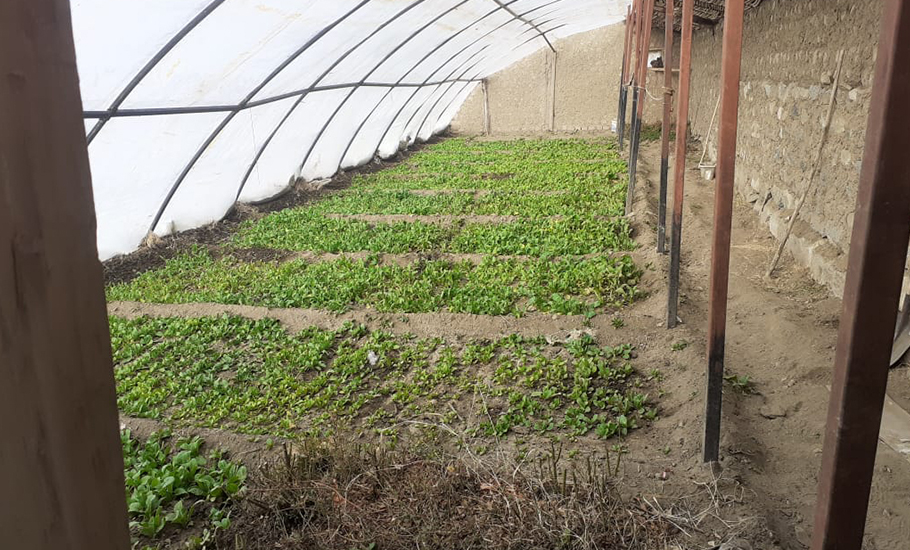
Much of this seasonal crisis is being attributed to the limited cooperative stockpiling and government’s frozen response. Even Krishi Vigyan Kendra (KVK) and Agriculture Department in Ladakh aren’t seen doing much to manage the crisis.
In fact, what’s further escalating the vegetable crisis is the non-availability of vegetable markets and minimal landholdings in Ladakh.
In 2020, during winter months around 300 tonnes of vegetables were imported by Cooperative Society Leh through army aircraft. The distribution of vegetables through cooperative society, however, was only in those areas of Leh which did not have an easy access to the Leh market.
“We managed to keep a bag of around 5 kgs for each family which included tomato, cabbage, peas and it was distributed after checking the ration cards at ration stores. The cost of vegetables was around Rs 40 per kg,” says Mohd Abbas, head of Cooperative Society for Vegetables, Leh. This winter, till January, the cooperative didn’t buy any vegetable consignment till the end of January.
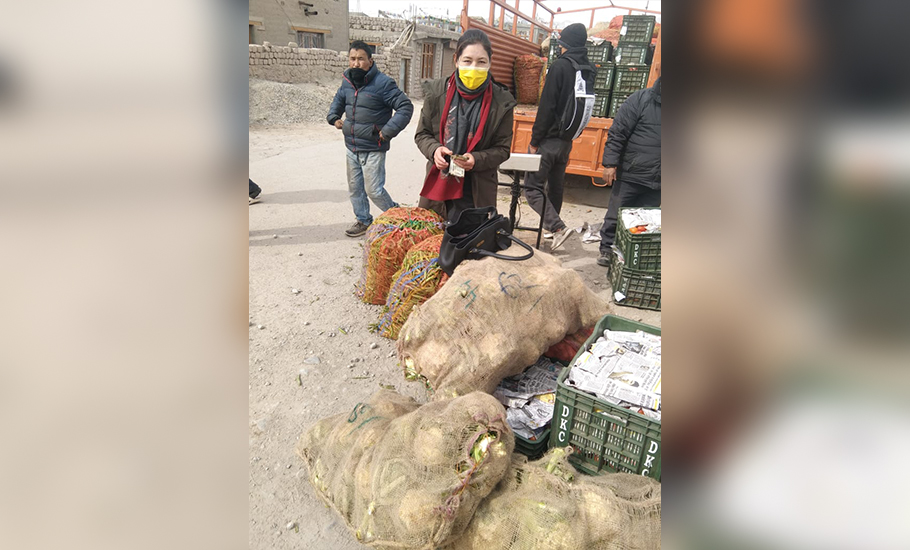
“A few days back we received our first consignment and we are going to distribute it in inaccessible villages in a phased manner,” he said.
Around 49.4 per cent of the population in Leh has a landholding of below 0.5 hectares per household. And in Kargil around 82.5 per cent of the population has a land holding below one hectare per household.
“Earlier, when Ladakh was part of Jammu and Kashmir, we had auction platforms and mandis regulated by Srinagar,” said Tashi Tsetan, chief agriculture officer of Ladakh. Another officer said that after August 5, 2019, when Ladakh was separated from J&K, this infrastructure became defunct.
“And together with low produce, it creates this winter food shortage in Ladakh,” he said.
Located at an altitude of 2,900 to 5,900 metres, Ladakh has a total vegetation area of 10,223 hectares of which vegetables are grown on 629 hectares.
Being a cold arid region with total dependence on glaciers for water, the region is in a critical state today as a result of erratic weather patterns and ever-receding glaciers due to climate change.
“Storing the excess precipitation (if any) during summer and conserving the free flow of rivulets and streams during autumn and early spring can mitigate water scarcity for agriculture during the main season,” said Jigmat Yangchan, scientist at KVK, Nyoma, Changthan-eastern Ladakh.
Ladakh has a limited farming period of about 120-150 days from May to September only. Single cropping is dominant in the region due to the long harsh winters. About 89 per cent of the population lives in rural areas which are cut off during winters.
Shortage of fresh vegetables during winters has paved the way for many innovations to attain self-sufficiency in food. In 2020, the UT government came up with a solution of poly-carbonated greenhouses for farmers.
But only a few Ladakhi farmers have these poly-carbonated greenhouses considered better than the classic greenhouses.
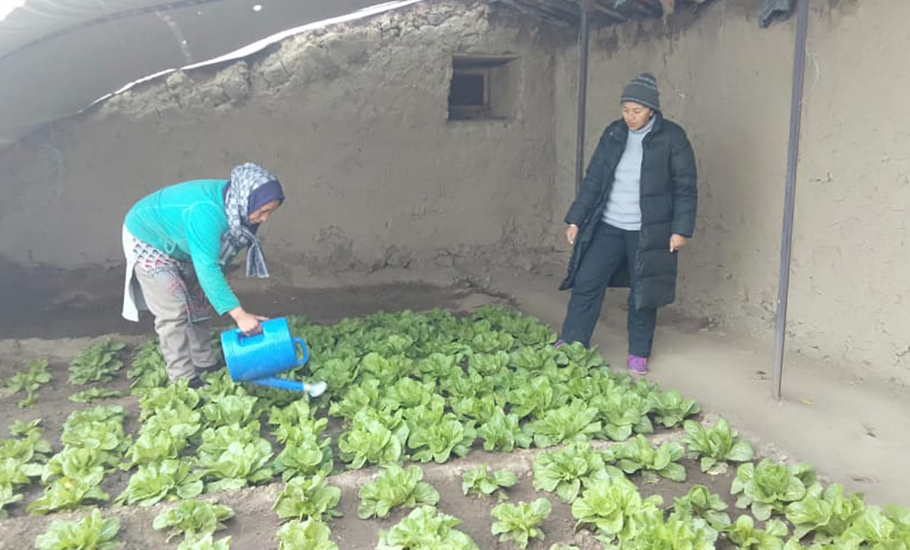
“We’ve only one poly-carbonated greenhouse in our village and its owner had to spend Rs 2.5 lakh on it,” says Sonam Yangdol, a farmer from Saboo, a village tucked 8 kilometres from Leh town.
“I’ve a small and usual polythene based greenhouse. During summers, I sell vegetables in the market, but in winters, we don’t have that much production and consume what we produce.”
Officials say that ever since Ladakh became a Union Territory, the administration has sanctioned around 2,500 poly-carbonated greenhouses for Leh and Kargil districts under the Ladakh green house project.
“The project aims to have these greenhouses in each village so that our dependence on import of vegetables from Chandigarh, Delhi and Jammu through air cargo will be reduced,” says Tsetan, chief agriculture officer.
“By 2023, the dearth of vegetables will be fully tackled through installation of these poly-carbonated greenhouses. During summers we only import around 30 per cent of vegetables.”
Despite being driven by the “vocal for local” governance motto, the Ladakh administration has largely failed to curb the winter food crisis. And even as the Kashmiri vegetable suppliers have stepped forward this year, the fresh greens remain confined to towns.
“We’re a middle-class family which cannot afford fresh vegetables imported to Ladakh during winters,” says Thinless Chorol, a bachelors student who grows veggies on her ancestral land in Buzgo village of Leh. “Since our village remains cut off for months due to snow, we mainly live on dry vegetables.”
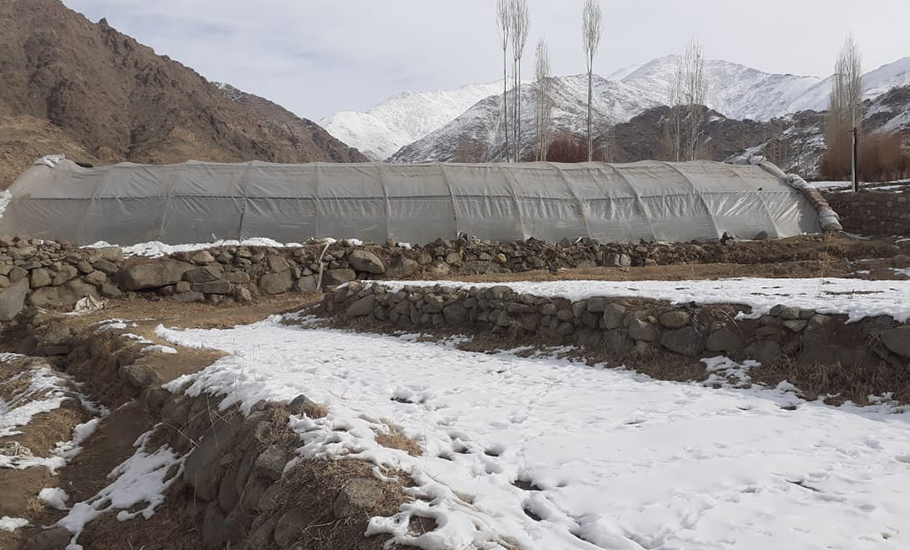
Chorol is attending a workshop these days to learn the use of a greenhouse during winters.
“I want to set up a poly-carbonated greenhouse to sell vegetables during winters and earn a living,” she says. “I believe it’s the only way out going forward.”
But as of now, it’s the erstwhile part of Ladakh—Kashmir—which is catering to the crisis and helping the cold desert combat the food crisis.

